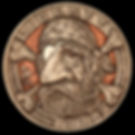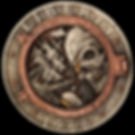
Q1

Q2

Q3

Q4

D12

D11


D12

D11


D12

D11


D12

D11


D12

D11


D12

D11


D12

D11


D12

D11



Saburov Art Studio
Hand Engraving Art by
Aleksey Saburov

Hobo History
The hobo nickel is a sculptural art form involving the creative modification of small-denomination coins, essentially resulting in miniature bas-reliefs. The nickel, because of its size, thickness, and relative softness, was a favored coin for this purpose. However, the term hobo nickel is generic, as carvings have been made from many different denominations. Many talented coin engravers, as well as newcomers, started creating hobo nickels in 1913, when the Buffalo nickel entered circulation.
The name “Hobo” first started appearing in the early 1800’s. Before the Civil War many hobos had taken to the rails as a way of life. Around the time of the Civil War, railroads were being built at an astonishing rate and in the early 1870’s there were between 50,000 and 60,000 miles of track interwoven throughout the United States. By the late 1880’s a depressed economy was prevalent, times were hard, and hoboes took to the rails in great numbers. Hitchhikers were also increasing in number since nobody had any money to go anywhere and pay the ticket to get there.
By the 1930’s this had grown to about 241,000 miles of track and the trains were running to all the bustling markets: Chicago, Michigan, and from all points south to move raw goods to the industrial northern areas, hauling cattle grain and everything else imaginable. In the early days, some would say that the hobo was into lots of bad things, from stealing to derailing trains, and even taking over entire trains. But in rural communities people would help them and give them jobs during the harvest time.
Every hobo had a thing that he did very well: repair shoes, make wire fruit bowls, or hoe a garden for a little something to eat. Many could play music with a guitar, harmonica, or some other musical instrument. It was not uncommon to see a hobo standing in the rear of a house drinking a cup of coffee and eating a sandwich, and then doing a little chore for the donor of the meal.
During the time that World War I was raging and the United States was yet to join the war, hoboes were running rampant, trying to enter the work force and settle down. Some did, but the number of hoboes continued to grow.
By the 1920’s, the unsettling image was beginning to change and there were some very notable people that had rode the rails, among them Jack London and author Carl Sandburg. They made it big in their respective fields and many people took this as a sign that it was possible to make a go of it without life revolving around trains.
The image of a clown made up as a hobo gained attention in the world of entertainment. What they really did was depict a certain way of life in America that many people could relate to, and the image of the friendly hobo found its way into the popular consciousness.



